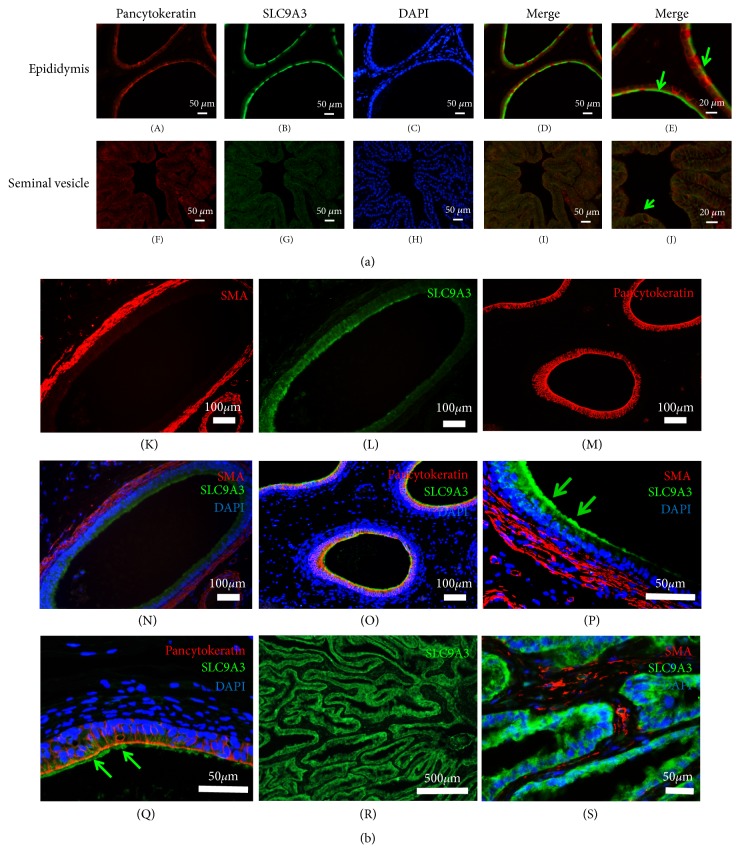Figure 4.
Immunofluorescence staining of rat epididymis and seminal vesicles. (aA–E). At upper panels, the apical borders of the epithelium in the epididymal duct were strongly immunoreactive for SLC9A3 (green). SLC9A3 was localized in ciliated cells (arrows), as showed in (a) (E). Pancytokeratin (red) was used as markers of epithelial cells, respectively. (F–I) The glandular epithelium of the seminal vesicle was also uniformly stained for SLC9A3 (green). (J) SLC9A3 (green) was observed at the plasma membrane of glandular epithelial cells and colocalized (arrows) with pancytokeratin. (b) Immunofluorescence staining of human epididymis and seminal vesicles. (K–O) The apical border of epithelial cells in the epididymal duct was strongly immunoreactive for SLC9A3 (green). (P–Q) Ciliated cells were clearly stained for SLC9A3 (400×). α-Smooth muscle actin and pancytokeratin (red) were used as markers of smooth muscle and epithelial cells, respectively. (R) Low-magnification imaging of the seminal vesicle revealed that SLC9A3 (green) accumulated at glandular epithelial cells. (S) A higher-magnification image showed SLC9A3 (green) at the plasma membrane of these cells. α-Smooth muscle actin was used to mark smooth muscle.

